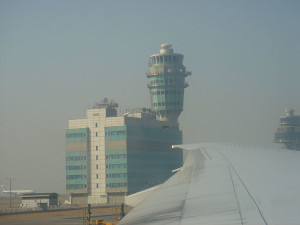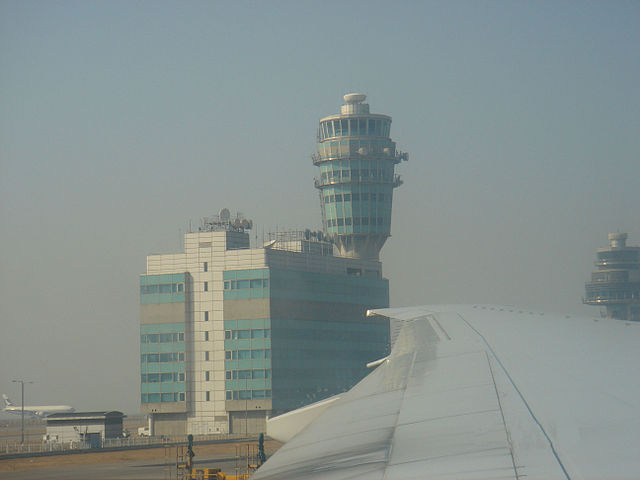 Despite the uneven recovery in the global economy, demand for foreign goods and commodities posted a net increase to awaken the airfreight market in the last quarter of 2013 and into 2014 after several years of flat growth, according to Airports Council International (ACI).
Despite the uneven recovery in the global economy, demand for foreign goods and commodities posted a net increase to awaken the airfreight market in the last quarter of 2013 and into 2014 after several years of flat growth, according to Airports Council International (ACI).
Airfreight ended 2014 with increases of 5.6% for December and 4.7% for the year as a whole. On an annual basis, international freight traffic rose by 5.7% whereas domestic freight increased by 2.6% year-over-year.
On the other hand, global passenger traffic ended 2014 strong with year-over-year growth of 5.6% in December, and a growth rate of 5.1% for the whole year. Both international and domestic traffic posted strong growth rates of 5.8% and 4.5%, respectively.
On the whole, passenger traffic remained resilient in the face of the global uncertainties that beleaguered many economies in 2013 and 2014, including the geopolitical risks in Eastern Europe and the Middle East, as well as the outbreak of Ebola cases in Africa.
On airfreight demand by region, volumes in the Asia-Pacific remained relatively strong with aggregate growth of 5.7% in 2014 despite the Asian slowdown. This can be attributed to stronger external demand and export growth, said ACI.
A rise in American consumer spending fuelled China’s exports of high-tech goods such as tablets, laptops, and mobile phones. The top global airfreight hub, Hong Kong, had an increase of 6.1% in traffic, putting it over 4.3 million metric tonnes in freight volumes for the year. Shanghai and Incheon, the region’s second- and third-ranked busiest airfreight hubs, had year-over-year increases of 8.6% and 3.3%, respectively. Haneda, Japan’s busiest airport, achieved double-digit growth of 14.7%, which put it over 1 million metric tonnes in air freight volumes in 2014.
The African airfreight market grew by 3.8% in 2014. While Cairo, one of the highest ranking airports in airfreight in Africa, grew by over 8%, Johannesburg, another leading freight hub, had a drop of 6.4% in 2014, contributing to the subdued growth on the continent.
Following a weakened Euro area in 2013, most European airfreight markets appear to be in recovery mode as airports in the region recorded an increase of 3.6% in 2014. More obstacles may be on the horizon given the ongoing geopolitical concerns in Eastern Europe and the risk of another Euro area crisis. Istanbul and Amsterdam posted the strongest growth rates with 6.7% and 11.6% compared to the previous year. Frankfurt and Paris, the region’s busiest hubs, grew by 1.8% and 0.8%, respectively.
With weakness in the Brazilian and Argentinian economies, freight volumes in Latin-America-Caribbean were almost flat in 2014. Brazilian airports, which occupy the largest share of freight traffic in Latin America-Caribbean, experienced a decline of 1.4% in airfreight volumes. Mexico, on the other hand, saw an overall rise of 5%. The busiest airports of Sao Paulo and Mexico City posted gains of 4.2% and 5.4%, respectively. Bogota, Colombia’s capital city airport and one of the region’s leading freight hubs, experienced only a slight increase of 0.8% in traffic.
While Dubai occupied the lion’s share of airfreight traffic in the Middle East at over 2.4 million metric tonnes, volumes actually decreased by 3.1% in 2014. With capacity for 12 million metric tonnes of airfreight, Dubai World Central is now set to be the region’s future air cargo hub. Growing by 262.5% in freight traffic in 2014, the new airport is now a major contributor to overall increases in freight volumes for the region and the world. Doha and Abu Dhabi, the second- and third-ranked airports in freight volumes, reported double-digit gains of 13.2% and 12.8%, respectively, in 2014. The Middle East experienced an increase of 11.8% in airfreight traffic, which makes it the highest growth region in 2014.
The higher growth in North America coincides with an American rebound. Lower unemployment and inflation containment coupled with a stronger international trade enabled growth of 3.5% for a banner year in airfreight. Two of North America’s leading airfreight hubs posted gains. Memphis and Louisville, home of FedEx and UPS, respectively, increased by 2.8% and 3.5% respectively. The biggest gains were achieved by Chicago-O’Hare with volumes moving up by 11.4%.
ACI World’s economics director Rafael Echevarne said: “In previous years we saw a marked divergence in growth between airports located in emerging markets versus those that are located in advanced economies. That is, the mature markets of North America and Europe experienced modest growth levels whereas the major emerging economies such as BRICS (Brazil, Russia, India, China and South Africa) had posted double-digit gains year-after-year. The recent cyclical slowdown in emerging markets has translated into lower growth levels with respect to both passenger and air freight traffic. However, the advanced economies of Europe and North America have rebounded in 2014, which resulted in a form of convergence in growth rates across the regions.”
“Regardless of the economic, geopolitical and health risks that lingered on the horizon in 2014, it is impressive to witness the overall resilience of the industry,” Echevarne continued. “Air freight rebounded after almost three years of growth stagnation whereas passenger traffic continues to post growth in the realm of 5% year after year following the Great Recession.”
Photo: Wikationer





